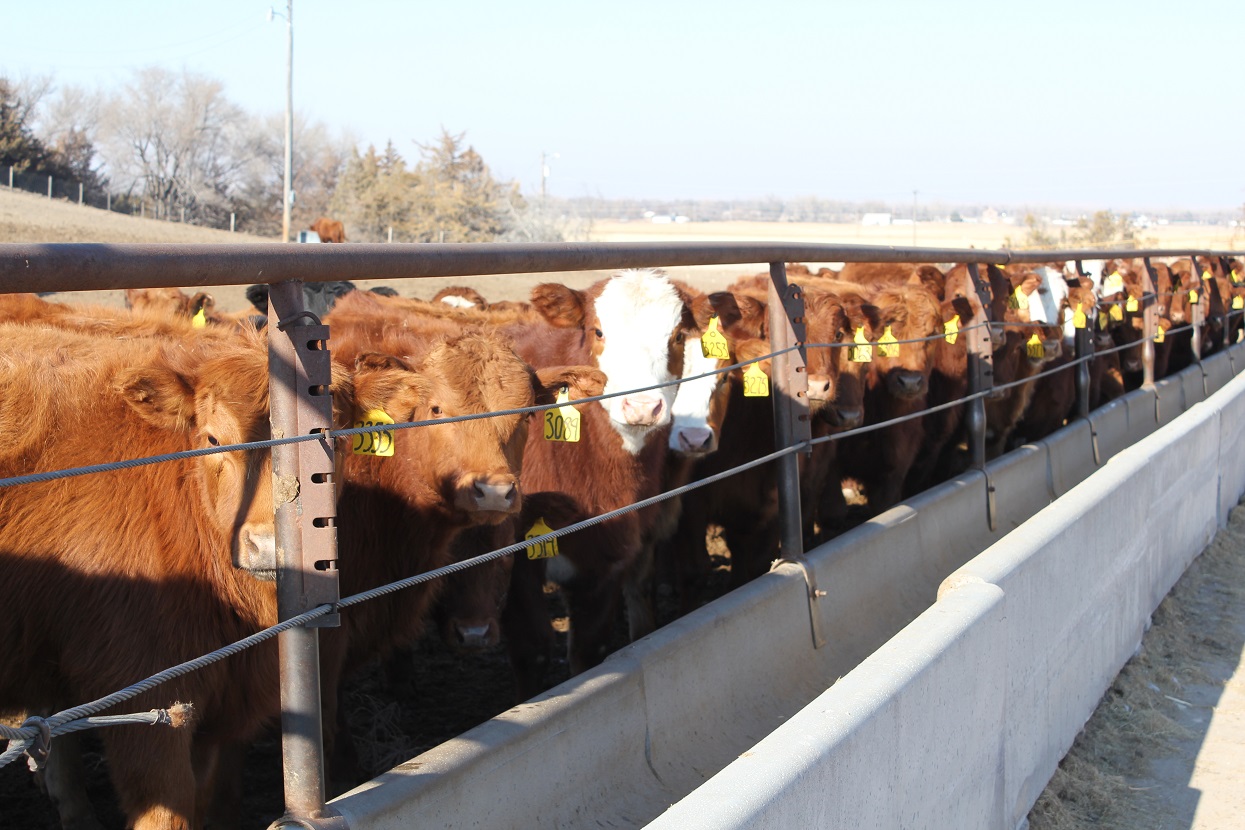By Rob Eirich

As January 1, 2017 nears, beef cattle producers need to be prepared for the Veterinary Feed Directive (VFD) regulation. Photo courtesy of Troy Walz.
As January 1, 2017 nears, beef cattle producers need to be prepared for the Veterinary Feed Directive (VFD) regulation being implemented by the United States Food and Drug Administration (FDA). The regulation will require producers to work directly with their veterinarian to utilize feed grade antibiotics with all food producing livestock.
A Veterinary Feed Directive is a written order—paper or electronic—by a licensed veterinarian approving the use of a VFD medication (feed grade antibiotic) for the prevention, treatment or control of a diagnosed disease. As the regulation goes into effect, it will apply only to antibiotics in livestock feed. They will not affect feed use medications such as ionophores, coccidia, other parasite and insect control drugs, or reproductive control medications. They will also not apply to antibiotics used by injection administration.
The first step producers should complete before January 2017 is to develop a Valid Veterinarian Client Patient Relationship (VCPR) through an operation site visit and herd health discussion. Within this discuss a complete herd health plan should be created for vaccination and treatment protocols. Producers must look at their operation production calendar to determine what health risks they may encounter over the course of the year and determine how to possibly prevent the risk through vaccinations or how to treat the diagnosis with antibiotics. This may also be an opportunity to look at other potential alternatives to help reduce the animal health risk, such as mineral programs or probiotic additives.
If the treatment protocol is to utilize a feed grade antibiotic, producers will be required to obtain a VFD from their veterinarian prior to purchasing and feeding the product. The veterinarian must create and sign a valid VFD (written or electronic), providing copies to the feed distributor and producer before the VFD product is delivered to the producer. The VFD will determine what indication is being treated, product being used, rate of inclusion, duration of treatment, number of head being treated, and at what location/operation. Each VFD will also include an expiration date which is the last date the product can be fed.
Another key point for producers to understand is that there is NO extra label use of medicated feeds. With the VFD this regulation will also be more enforced within the livestock industry. VFD products can only be used for prevention, treatment or control of indication on the FDA Approved Labels. Currently, all feed manufacturers have submitted new labels removing all performance improvement claims and adding the new VFD regulation requirements. The new labels will help veterinarians determine how the VFD products can be used and how the VFD is to be implemented for that specific product. All labels will be approved by January 2017 for implementation of this new FDA regulation. A list of common beef cattle products can be found on the VFD page at the Nebraska BQA website.
As with any Federal regulation there will be documentation and record keeping involved. Veterinarians will be required to keep a record of the diagnosis and the original VFD document. Feed Distributors will keep a copy of the VFD with the purchase/delivery receipts. Producers also hold a copy of the VFD, purchase/delivery receipts, and feeding records. All of the documents must be filed and kept for two years from the VFD issued date.
The Veterinarian Feed Directive regulation will be a new way of doing business for everyone involved in the livestock industry. There will be growing pains as the implementation takes place for all entities involved. Producers taking the first step of developing a Valid VCPR with their veterinarian through discussions on their herd health plan, will be more prepared as final implementation occurs.
Source:unl.edu